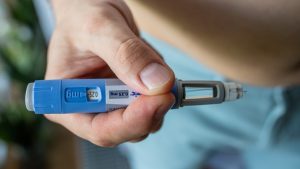Articles / Skin cancer tips and traps

0 hours
These are activities that expand general practice knowledge, skills and attitudes, related to your scope of practice.
0 hours
These are activities that require reflection on feedback about your work.
0 hours
These are activities that use your work data to ensure quality results.
These are activities that expand general practice knowledge, skills and attitudes, related to your scope of practice.
These are activities that require reflection on feedback about your work.
These are activities that use your work data to ensure quality results.
Skin cancer affects about one in two Australians––and not just fair-skinned, blue-eyed blonds, outdoor workers or people with a family history—says Associate Professor Robyn Saw, Head of the Melanoma and Surgical Oncology Department at Royal Prince Alfred Hospital and Surgical Oncologist with Melanoma institute Australia.
Here are some key ‘tips and traps’ to keep in mind when managing skin cancer in general practice.
Melanoma is the third most common type of cancer in Australia. While typically pigmented, 20% are amelanotic and “don’t look like the classical melanoma,” she says.
Some can simply look like a plaque of pink tissue or a vague brown pigment. Melanoma can also occur in scar tissue.
Sixty per cent of melanomas arise in normal skin and it’s important to listen to patients if they present with a concern, says Associate Professor Saw.
If a patient presents with a new or changing lesion, “ask them all about it,” she emphasises.
While you can reassure them if you’re certain about the diagnosis, she stresses the importance of follow-up, biopsy and referral if there’s any uncertainty at all.
“The misdiagnosis of melanoma is one of the most common causes for malpractice litigation,” she notes.
“Have a feel of it. Is it hard? Is it raised over the skin? Consider taking a photograph, and when you bring the patient back, if you think it’s benign, take another photograph and compare them.”
Learning to use a dermatoscope is essential to work out what the lesion is, she adds.
There are two types of dermatoscope—polarised and contact––and you can toggle between these functions on most modern ones. Polarised light allows you to see blood vessels in lesions.
You can take sequential dermatoscopic photographs to monitor lesions.
“Don’t just examine the lesion that they came with. Have a look at them generally,” Associate Professor Saw says.
She marks the lesion and anything else of importance on a skin-body diagram.
“The main thing is to be suspicious,” she adds. “Don’t ignore anything.”
Ideally, take out the whole lesion with a two-millimetre clearance.
“That gives the pathologist enough tissue to make a good diagnosis,” she says.
A complete excision may not be possible if the lesion is large or on somewhere like the face. In this case, do a partial biopsy, Associate Professor Saw says.
This could be:
“Don’t do an unusual flap or don’t take risks in terms of trying to achieve a complete excision biopsy if you can’t do it,” she adds. “Do a partial biopsy. Do it the right way.”
It’s important to clinically assess the draining node fields, Associate Professor Saw says.
Sentinel node biopsy may be necessary if:
“Six to 15%, discuss a sentinel node biopsy. If greater than 15%, they should probably undergo a sentinel node biopsy.”
She suggests referring to a skin cancer oncologist, dermatologist, or plastic surgeon if:
Melanoma Institute Australia | Education portal

Menopausal Hormone Therapy - What Dose of Estrogen is Best?

Cardiovascular Benefits of GLP1s – New Evidence

Oral Contraceptive Pill in Teens

RSV and the Heart



Modified but kept in place
Eliminated entirely without replacement
Maintained as is
Completely replaced with an alternative system
Listen to expert interviews.
Click to open in a new tab
Browse the latest articles from Healthed.
Once you confirm you’ve read this article you can complete a Patient Case Review to earn 0.5 hours CPD in the Reviewing Performance (RP) category.
Select ‘Confirm & learn‘ when you have read this article in its entirety and you will be taken to begin your Patient Case Review.
Menopause and MHT
Multiple sclerosis vs antibody disease
Using SGLT2 to reduce cardiovascular death in T2D
Peripheral arterial disease
